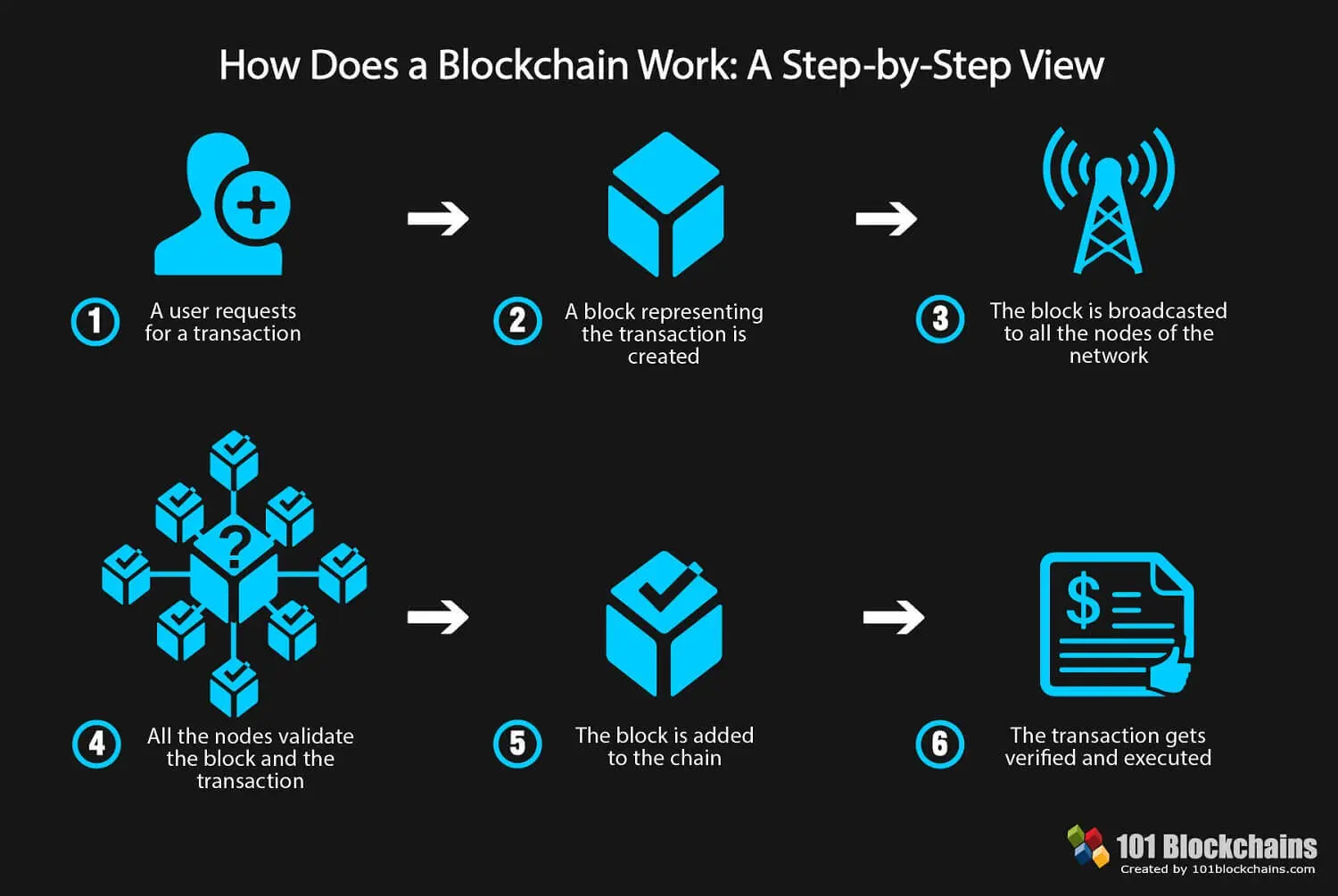Cardano
Introduction to Cardano and blockchain technology
The overall goal of the Cardano project is to make all sorts of systems more inclusive, transparent and efficient by means of blockchain technology. To make this more tangible, you can think about our financial systems, our education systems, or our government systems. Although all kinds of systems can be improved by the Cardano project, we* will focus on these three examples here. Additionally, we will provide you with some information on what makes the structure and organization of Cardano stand out.
Before we delve into these examples, let’s start by explaining a bit more about blockchain technology. A blockchain is a decentralized network of computers that exchange and store information in the form of blocks. The information in these blocks can contain simple data such as transactions, but can also, in the case of the Cardano blockchain, be more complex, e.g. making it possible to provide loans, issue identities, and even to vote.
One of the unique properties of the blockchain is that information, once stored, will always be stored, making it very secure and transparent. Moreover, because of the decentralized structure of the network, authoritative powers are no longer needed to facilitate the execution of tasks, which has the potential to make systems more inclusive and efficient.
Improving systems
Now, let’s get back to systems, and first of all, let’s talk about how the Cardano project aims to improve the financial system. To make financial services accessible for all is one of the main goals of the Cardano project, since about a third of the adult population worldwide is still unbanked and lacks the opportunity to get a loan under reasonable conditions. Furthermore, the average transaction cost of remittances is 7% and can be up to 23% depending on the country (source: World Bank). This is a huge burden for the world’s poor, since more than $500 billion in remittances is sent to developing countries each year (source: United Nations).
Using the Cardano blockchain, these issues can be resolved. Transaction costs can be reduced significantly by removing the necessity for a middleman and thus greatly cutting down fees for expensive and inefficient financial organizations. Moreover, it enables anybody to create a secure and valid economic identity and build up a credit score without the need for a central authority via its own identity solution Atala Prism. This makes small loans (and other small payments) and peer-to-peer loans financially viable across the entire globe, and makes it possible for the world’s poor to become included in the formal financial system.
Secondly, the unique properties of the Cardano blockchain, its decentralized, secure and transparent nature, can also be beneficial for education systems. For example, Cardano’s network can be used for students and teachers in order to safely store student performance and to improve credibility to education systems. In 2021, Cardano signed an agreement with the Ministry of Education of Ethiopia, which resulted in the biggest blockchain deployment thus far: 5 million Ethiopian students and teachers will get a tamper proof education record on the Cardano blockchain.
Thirdly, the blockchain offers tremendous possibilities to governance systems. The inherent transparency of the blockchain could be a powerful tool to combat corruption and to improve democratic participation. Manipulation of sensitive government data can be made much more difficult, and, for example, important donations to public actors can become open to the public, weakening the opaque influence of wealthy lobbyists.
Why Cardano stands out
Finally, let’s move on to what makes the structure and organization of Cardano stand out. The Cardano blockchain platform distinguishes itself by its rigorous method of research and development. All components of the Cardano network are built from scratch based on peer reviewed and open sourced scientific research. Amongst many others, this methodology has led to the choice for a ‘proof of stake‘ consensus mechanism resulting in the network being far more energy-efficient than ‘proof of work’-based blockchain platforms such as Bitcoin (estimates vary between tens of thousands to above a million times more energy-efficient). Another result is that the price of using the Cardano network is significantly lower compared to its competitors.
While Cardano brings endless possibilities to positive change in the world, its blockchain has only been online since 2017, evolving ever since. It will keep evolving and will depend upon continuous development, thus requiring continuous investment. Luckily, Cardano has a sustainable form of governance in place, including a treasury system. Most Blockchain platforms raise considerable wealth with Initial Coin Offerings (ICOs), acquiring one-off funds for development at the outset of the projects. However, Cardano’s form of governance ensures continuous funds for development of the ecosystem by generating them from a small part of the transaction fees, which has resulted in Cardano having one of the biggest developer communities.
All of these awesome features and many more will take time to be readily available to the world. Technologic development takes decades to refine and we are only dipping a toe into a realm of new possibilities. It’s an exciting time ahead, and we are looking forward to this new technological revolution!
*Fabian (MOKUM) and Roemer (ROMER)
